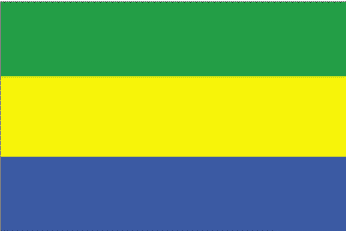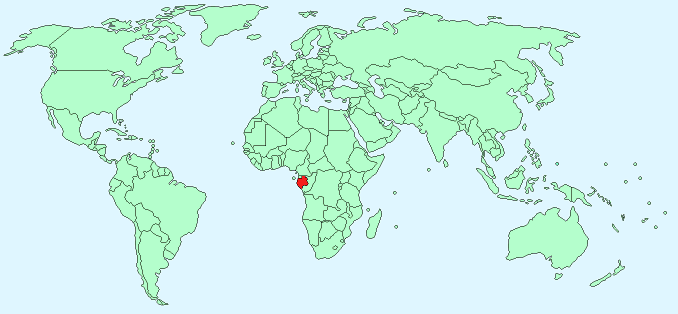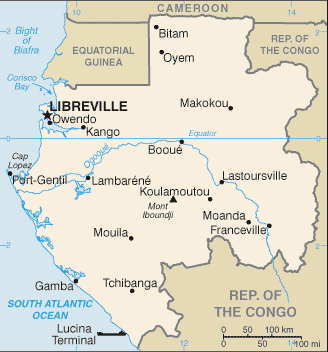Gabon


Continent – Africa
Region – Central Africa
Size – 267,667 km²
Geography – coastal plain, central hills
Language – French, Fang, Myene, Nzebi, Bapounou, Bandjabi
Religion – 85% Christian, 15% other
Monetary Unit – CFA Franc
Natural Resources – petroleum, natural gas, diamond, niobium, manganese, uranium, gold, timber, iron ore, hydropower
Agriculture – cocoa, coffee, sugar, palm oil, rubber; cattle; fish
Industry – petroleum extraction and refining; manganese, gold; chemicals, ship repair, food and beverages, textiles, lumbering and plywood, cement

Neighbouring Countries – Equatorial Guinea, Cameroon, Republic of the Congo,
Population – 1,672,597 (2014 estimate)
Population Growth Rate – 1.94%
Average Life Expectancy – 52.06
Capital City – Libreville (686,000)
Highest Mountain – Mont Iboundji (1,575 m)
Longest River – Ogooue (1,200 km)
Climate – topical, hot, humid 20°C to 31°C
Yearly Rainfall – 250 cm (approx)
Plant Life – dense forest
Animal Life – elephants, buffalo, antelope, situtungas, lions, panthers, crocodiles, and gorillas
Bird Life – many species of birds
Harvard Reference for this page:
Heather Y Wheeler. (2015). Gabon. Available: https://www.naturalhistoryonthenet.com/Facts_Figures/Country_Facts/gabon.htm. Last accessed Monday, July 18, 2016
Facts and Figures Pages
